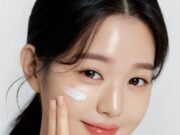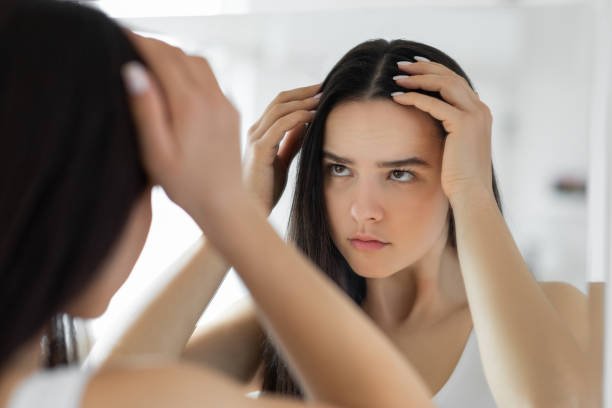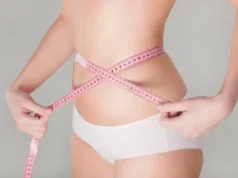
Introduction
Imagine being in your mid-teens, focused on school, social media, and dreams for the future — and then spotting a stray silver strand in your hair. It can be alarming, confusing, and even a bit unsettling. Why is gray hair supposed to be an “old person” thing — yet now showing up in teenagers? In this post, we’ll dive into what science currently knows (and doesn’t) about premature graying in youth, explore plausible causes, share practical advice, and help teens and parents understand when to take action. Let’s unravel the mystery together.
What Does “Premature Graying” Mean?
Before exploring why, it’s helpful to define when gray hair becomes “premature.” In medical literature, hair is considered prematurely gray when it appears earlier than expected for an individual’s ethnic group and age. For example:
- In Caucasians, graying before age 20 is generally regarded as premature
- In Asians, the threshold is often considered before age 25
- In African populations, before age 30 may qualify as early graying
Healthline+2PMC+2
Thus, a teenager seeing multiple gray hairs would often fall into the category of premature graying (also called premature canities). PMC+2PMC+2
The Biology Behind Hair Color (In Brief)
Hair color is determined by pigment-producing cells called melanocytes in the hair follicles. These cells synthesize melanin (the same pigment responsible for skin color). As we age — or due to other influences — the number or function of these melanocytes declines, leading to hair growing in with less pigment (i.e. gray or white strands). Cosmoderma+3Wikipedia+3ScienceDirect+3
Also, melanocyte stem cells are thought to be a reservoir that replenishes pigment-producing cells over time. If these stem cell pools get depleted, hair follicles lose their ability to color effectively. ScienceDirect+2Wiley Online Library+2
In short, premature graying suggests an earlier-than-expected decline in the melanocyte system, whether by genetics, stress, nutritional deficits, or other factors.
Common Causes of Gray Hair in Teenagers
There’s no single cause that fits every case. Instead, premature graying often arises from a combination of genetics, environmental stressors, nutritional issues, and underlying health conditions. Let’s break them down.
1. Genetics & Family History
Perhaps the strongest predictor is family history. If one or both parents started graying early, the odds are higher that their children may also experience early graying. Wikipedia+3toplinemd.com+3Wiley Online Library+3
Genetic studies continue to uncover genes involved in melanin synthesis, pigment transport, and the regulation of melanocyte aging — all of which can influence when graying begins. ScienceDirect+2Wiley Online Library+2
While you can’t change your genes, knowing this predisposition helps frame expectations and guide monitoring.

2. Oxidative Stress & Environmental Damage
Cells (including melanocytes) are vulnerable to damage by free radicals — unstable molecules generated by pollution, UV radiation, smoking, and other stresses. When the body’s antioxidant defenses can’t keep up, oxidative damage can accelerate aging-related changes, including graying. Karger Publishers+4ScienceDirect+4PMC+4
A particularly intriguing recent study (in mice) suggested that stress triggers sympathetic nerve signals releasing norepinephrine, which drives melanocyte stem cells to exhaust themselves prematurely — meaning they can’t regenerate pigment later. Harvard Stem Cell Institute
While human biology is more complex, this model provides a mechanistic link between chronic psychological stress and early graying. WebMD+3Harvard Stem Cell Institute+3Healthline+3
Thus, environmental exposures (pollution, UV, chemicals in hair care) and life stress may each play a role.
3. Nutritional Deficiencies & Mineral Imbalances
Several nutritional factors have been implicated in premature graying. Key nutrients include:
| Nutrient | Role in Hair Pigmentation / Evidence | Food Sources & Notes |
|---|---|---|
| Vitamin B12 | Deficiency may cause hypopigmentation and early graying; some cases are reversible with supplementation. PMC+5WebMD+5Harvard Health+5 | Meat, fish, dairy, fortified cereals |
| Copper | Low copper levels have been observed in people with premature graying (copper is involved in enzymes necessary for pigment synthesis). PMC+2Cosmoderma+2 | Nuts, seeds, shellfish, legumes |
| Iron / Ferritin | Lower ferritin (iron stores) has been linked to early graying in some populations. PMC+2PMC+2 | Red meat, spinach, beans |
| Vitamin D3 & Calcium | In some studies, lower vitamin D3 and calcium were noted in individuals with premature graying (especially in youth). PMC+2PMC+2 | Sunlight exposure, dairy, fortified foods, leafy greens |
| Folate / B9 | Folate deficiency correlates with pigment loss in some studies. Healthline+2PMC+2 | Leafy greens, beans, citrus fruits |
| Zinc / Selenium | Some linked micronutrients; evidence is less strong but suggests support for antioxidant and metabolic balance. Healthline+2PMC+2 | Nuts, seafood, whole grains |
That said, while vitamin/mineral deficiencies are associated with some cases of early graying, supplementing them won’t always reverse the change — especially once pigment-producing capacity is lost. Wiley Online Library+4WebMD+4PMC+4
Still — ensuring good nutrition, particularly during teenage growth phases, is one of the more accessible ways to support hair health.
4. Underlying Health Conditions
While most early graying is benign, in some cases it may flag an underlying medical issue. Conditions that may contribute include:
- Autoimmune disorders, such as vitiligo or autoimmune thyroid disease (hyperthyroidism, hypothyroidism). In vitiligo, melanocyte destruction in skin can also affect hair pigment. PMC+4Healthline+4PMC+4
- Pernicious anemia (autoimmune B12 deficiency) — linking nutrient deficiency with autoimmune origin. Harvard Health+2PMC+2
- Metabolic disorders or hormonal imbalances — though evidence here is more limited. PMC+2PMC+2
- Rare genetic premature aging syndromes, though these are extremely uncommon — for example, Werner syndrome (which includes premature graying among other aging signs). Wikipedia
If premature graying is accompanied by symptoms such as fatigue, weight changes, hair loss, skin changes, or other health concerns, it may be wise to consult a medical professional for evaluation.
5. Lifestyle & External Factors
Beyond internal causes, daily habits may influence the pace of graying, especially when other vulnerabilities are present:
- Smoking: Linked to early graying, likely via oxidative stress and vascular damage to hair follicles. PMC+3WebMD+3Cosmoderma+3
- Excessive UV / Sun Exposure: UV light contributes to oxidative damage in skin and hair. Health+2ScienceDirect+2
- Harsh Hair Treatments / Chemicals: Repeated bleaching, coloring, perming, or high heat can stress hair follicles and exacerbate pigment loss over time. WebMD+2Health+2
- Chronic Psychological Stress: We’ve already noted the mechanistic hypothesis via norepinephrine and melanocyte stem cell depletion. In humans, chronic stress likely accelerates aging pathways (oxidative stress, inflammation) that degrade pigment function. PMC+3Harvard Stem Cell Institute+3Karger Publishers+3
Real-World Examples & Anecdotes
- A cross-sectional study in young adults found that about 47% reported some degree of premature hair graying, with average onset around age 16.3 years. Karger Publishers
- In some regions, clinicians routinely test for serum ferritin, vitamin B12, calcium, and vitamin D3 levels in teens presenting with premature graying — and have found deficiencies in many cases. PMC+2PMC+2
- On social media platforms, more teenagers and young adults are openly sharing their gray hair stories — some as a badge of uniqueness, others seeking medical advice or community support. Daily Telegraph
These observations underscore both how common (or at least visible) early graying is becoming, and how multifactorial its causes may be.
What Can Teenagers (and Parents) Do About It?
Here are some practical, realistic steps to manage, slow, or adapt to premature graying:
✅ 1. Get a Health Check-Up
Because gray hair sometimes signals underlying imbalances, a baseline screening is wise:
- Blood tests: full blood count, ferritin (iron stores), vitamin B12, vitamin D3, thyroid panel
- Medical history: family history, autoimmune risk, other symptoms
- Nutritional review: evaluation by a dietitian or clinician
This helps rule out treatable causes.
✅ 2. Focus on Nutrition & Antioxidant Support
While nutrition alone may not restore hair color, it can help maintain healthy follicles:
- Eat a balanced diet rich in proteins, leafy greens, nuts, seeds, lean meats (if non-vegetarian), or plant-based protein options (for vegetarians/vegans)
- Emphasize foods containing copper, zinc, iron, B-vitamins, vitamin D
- Incorporate antioxidant-rich foods: colorful fruits and vegetables, green tea, berries
- Stay hydrated and limit processed foods
✅ 3. Manage Stress Mindfully
Because stress can have cascading effects on overall health:
- Practice mindfulness, yoga, meditation, or deep-breathing exercises
- Maintain regular physical activity (sports, walking, etc.)
- Prioritize sleep hygiene — aim for 7–9 hours nightly
- Cultivate support systems: friends, mentors, counselors
✅ 4. Adopt Gentle Hair Care
Protect what pigment remains:
- Minimize harsh chemicals: reduce bleaching, frequent dyeing, high-heat styling
- Use mild, sulfate-free shampoos and conditioning treatments
- Limit UV exposure to hair (wear hats, use UV-protectant hair products)
- Periodic scalp massage may stimulate circulation to follicles (though evidence is anecdotal)
✅ 5. Cosmetic Options & Acceptance
- Many teens choose to embrace their gray strands — silver roots can be a striking aesthetic statement
- For those who prefer color, using semi-permanent or less aggressive hair dyes is safer than repeated bleaching
- Hair glosses, toners, and root cover sprays can help blend grays temporarily
- Accepting the possibility that some strands are permanent is part of managing expectations
✅ 6. Stay Informed of Emerging Research
Science continues to explore potential therapies — from pigment-restoring compounds to stem-cell–based interventions. But at present, no widely validated “cure” exists. Wiley Online Library+3Popular Mechanics+3PMC+3
Thus, focusing on health, nourishment, and self-confidence is your best strategy for now.
When to See a Specialist
If any of the following apply, seeking a dermatologist or endocrinologist is reasonable:
- Sudden, rapid onset of graying (many new white hairs in a short time)
- Accompanying symptoms: fatigue, weight changes, hair loss, skin changes
- Known autoimmune disease, thyroid issues, or vitamin deficiencies
- Emotional distress — if the change is affecting mental well-being
A specialist may order more detailed investigations or suggest personalized interventions.

The Psychological & Social Side
Gray hair in teens doesn’t just challenge physiology — it can affect self-image, peer perception, and emotional well-being. Some may feel awkward or worry about being judged. Others use it as a mark of individuality.
Encouragement and support matter. Parents, educators, and peers can help cultivate a mindset that hair color is just one part of identity — not a defining one. Public discourse about embracing diversity (in hair, skin, and body) is increasingly positive, and that can help shift stigma.
Conclusion & Call to Action
Seeing gray strands in your teenage years may feel surprising, even alarming — but in most cases, it’s part of a complex interplay of genetics, stress, nutrition, and environmental factors rather than a mysterious “curse.” While you can’t always reverse early graying, you can support your body, monitor your health, and cultivate a mindset of adaptability and confidence.
If you’re curious, concerned, or just want to share your experience, comment below or visit SmartInnovateHub.com to explore more articles on health, innovation, and lifestyle. Share this post with friends or family who might find it useful, and let’s keep the conversation going!























